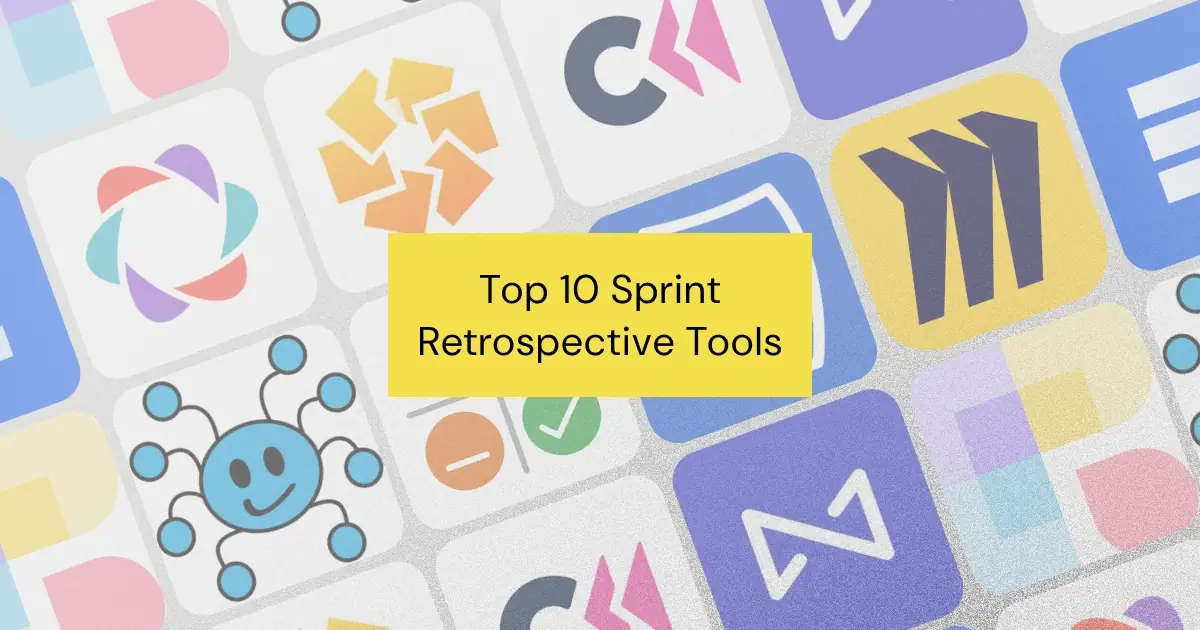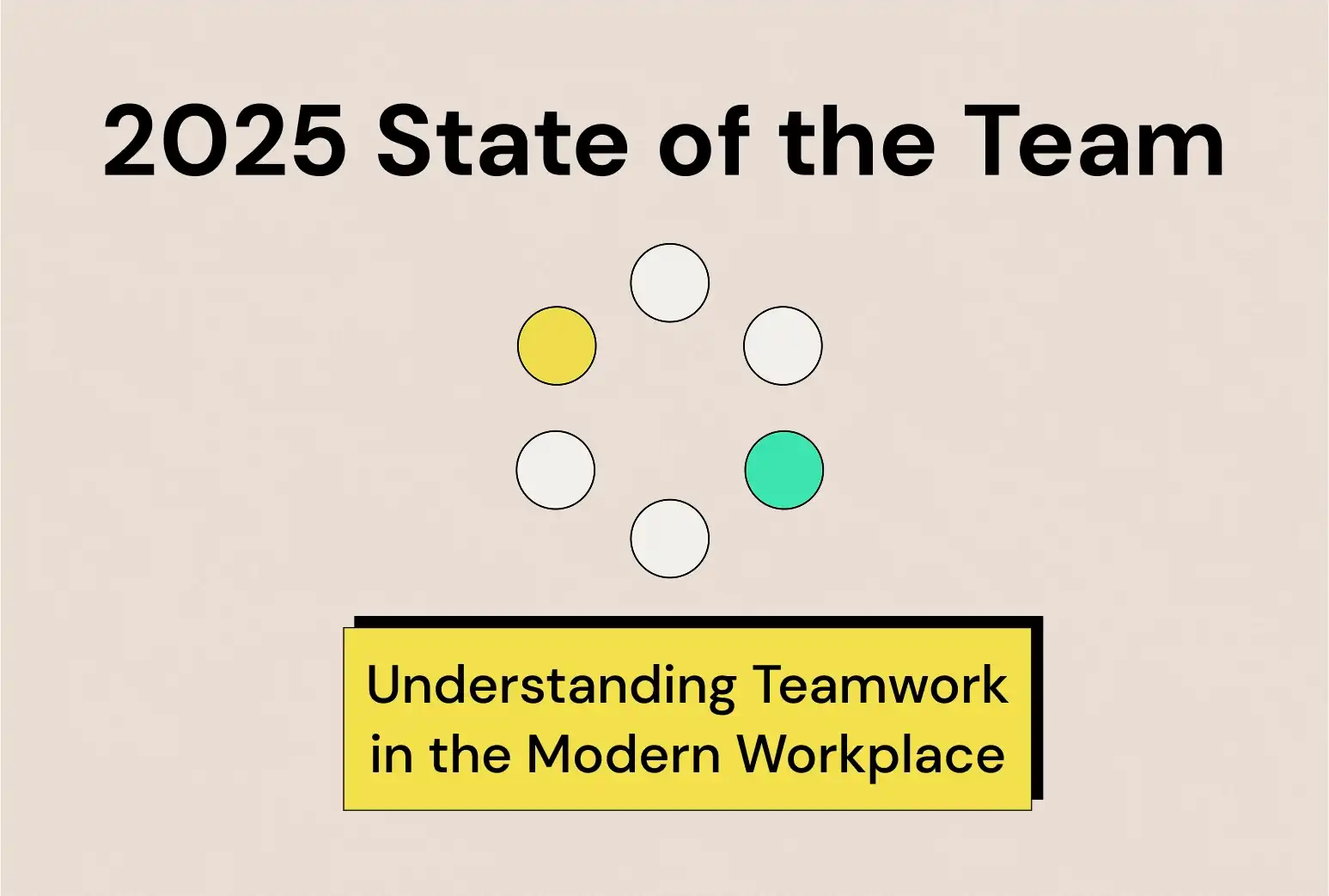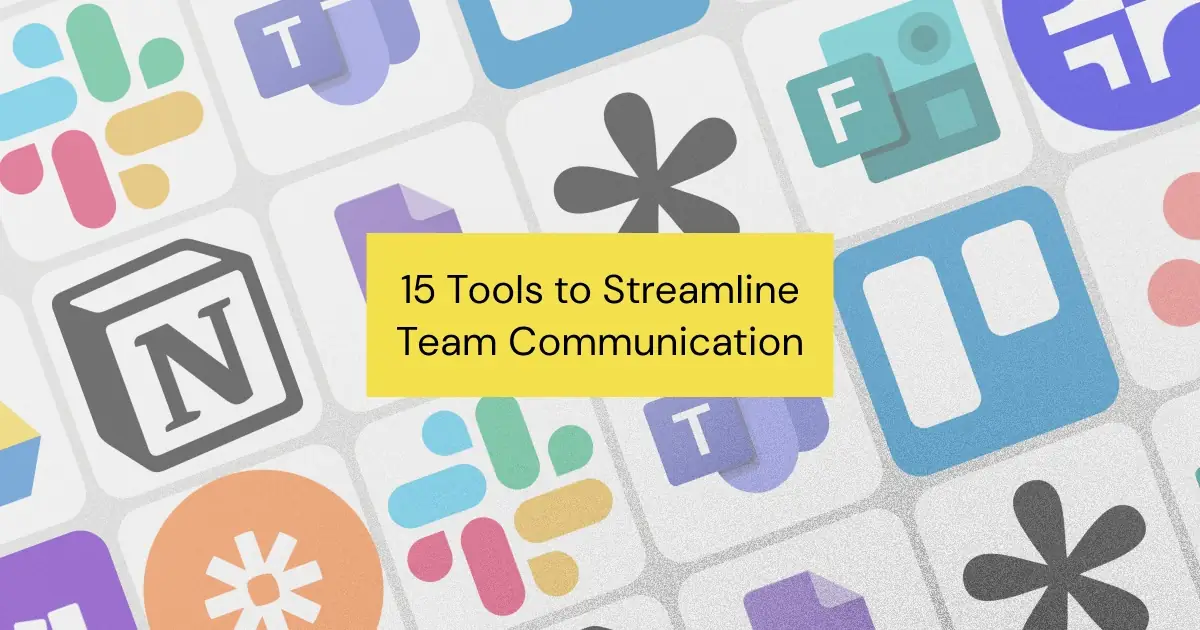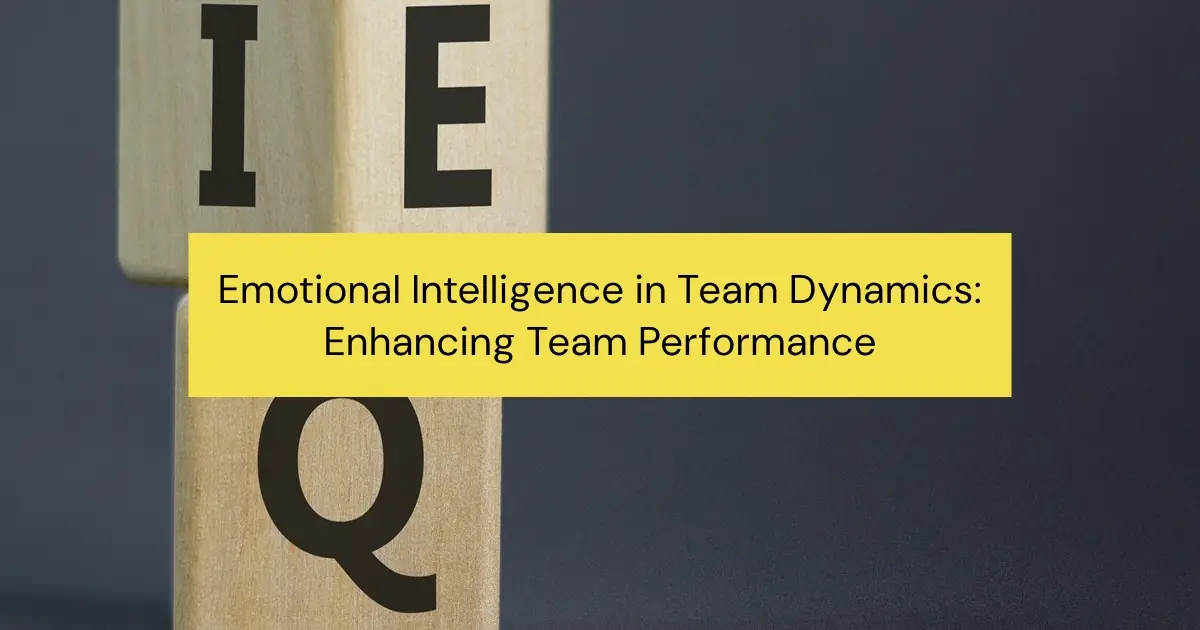Sprint retrospectives are the secret sauce that keeps Agile teams improving with every iteration. These meetings give teams a chance to reflect on what went well, what didn’t, and what could be improved for the next sprint. But to get the most out of a retrospective, you need the right tools—especially when your team is remote or hybrid. The right tools don’t just make the process smoother; they encourage honest feedback, engagement, and actionable insights.
Using the right technology can transform your retrospectives from just another meeting into a crucial part of your team’s growth. It helps surface key insights that boost collaboration, communication, and performance. And if you want to take things a step further, adding a team-building tool like TeamDynamics can help you and your team better understand your ways of working, so you can get more done, with fewer frustrations.
Looking for other tools to help with your recurring meetings? Check out our round-up of the 35 best tools for running weekly team meetings!
In this post, we’ll explore the best tools for holding an effective sprint retrospective and how you can choose the one that’s best for your team.
Why Sprint Retrospectives Are Important
A sprint retrospective isn’t just another meeting on the calendar—it’s a vital checkpoint that allows your team to reflect on what worked, what didn’t, and what could be improved. In Agile workflows, retrospectives are where teams identify opportunities for growth, adapt to changes, and reinforce best practices. They create a space for honest feedback, helping teams stay aligned on their goals and performance.
The real value of a sprint retrospective lies in its ability to make incremental improvements over time. Every sprint offers a chance to refine the team’s processes, communication, and collaboration. Over the long term, this continuous improvement leads to better outcomes, happier teams, and smoother project execution.
However, to get the most out of these retrospectives, it’s important to use the right tools. Effective tools streamline the feedback process, allow for real-time collaboration, and provide clear action items that teams can act on in the next sprint. Additionally, tools like TeamDynamics can take your retrospective insights further by helping teams understand how their individual preferences and work styles align with broader team norms. This can be a game-changer when it comes to improving communication and reducing friction.
{{inline-cta}}
Key Features to Look for in a Retrospective Tool
Not all retrospective tools are created equal. To get the most value out of your sprint retrospectives, you need tools that can streamline the process and help your team stay engaged. Here are the key features you should look for when choosing a retrospective tool:
- Real-Time Collaboration: If your team is remote or hybrid, real-time collaboration is essential. You need a tool that allows everyone to contribute simultaneously, whether they’re in the same room or across the globe. Features like virtual sticky notes and live voting ensure everyone’s voice is heard.
- Customizable Templates: Different teams have different ways of running retrospectives. Look for tools that offer customizable templates, so you can tailor the format to your team’s needs. Whether you’re using “Start, Stop, Continue” or “Mad, Sad, Glad,” having flexibility is key.
- Voting and Prioritization: A good retrospective tool makes it easy for teams to prioritize action items. Voting features allow team members to weigh in on the most pressing issues, ensuring that the retrospective leads to meaningful changes.
- Action Item Tracking: A great retrospective doesn’t end with ideas—it ends with a plan. The best tools help teams track action items, assign ownership, and follow through on the improvements discussed.
- User-Friendly Interface: Time spent figuring out a complicated tool is time wasted. Opt for something intuitive that doesn’t require a learning curve, so your team can focus on the discussion instead of the technology.
- Integration with Project Management Tools: If your team is already using tools like Jira or Trello, finding a retrospective tool that integrates with your project management software will make it easier to track action items and follow through on the changes identified.
By choosing a tool that has these features, you’ll ensure that your retrospectives run smoothly and lead to real improvements for your team. And don’t forget—tools like TeamDynamics can complement these retrospective tools by helping you understand team dynamics and working styles at a deeper level, leading to better collaboration and communication.
We also have a useful guide for how to measure team performance!
Best Sprint Retrospective Tools
Now that you know what to look for in a retrospective tool, let’s dive into the best options available. These tools offer a range of features that make it easy to run effective, engaging retrospectives that lead to actionable insights.
1. Metro Retro
Metro Retro is a collaborative, visual tool designed to make retrospectives fun and interactive. It offers virtual sticky notes, customizable templates, and real-time collaboration, with features like emojis and drawings to make retros more engaging.
Pros of Metro Retro:
- Highly interactive and visually engaging.
- Real-time collaboration with remote teams.
- Easy voting and action item tracking.
- Customizable templates to fit different retro formats.
Cons of Metro Retro:
- May feel a bit too informal for teams seeking a more structured approach.
- Can be overwhelming for larger teams due to the open-ended format.
When to Use Metro Retro: Metro Retro is great for teams that want to add a fun, creative element to their retrospectives. It’s especially useful for smaller or more creative teams that thrive on visual collaboration and need a lightweight, informal tool to guide the conversation. However, it may not be ideal for highly structured teams that prefer a more organized format.
2. Miro
Miro is a versatile digital whiteboard that offers flexibility for retrospectives and a wide range of collaborative activities. With sticky notes, drawing tools, and various templates, it allows teams to brainstorm and capture feedback in real time.
Pros of Miro:
- Extremely flexible, allowing teams to create their own retro formats.
- Great for teams that want to use one tool for multiple purposes (not just retrospectives).
- Seamlessly integrates with other tools like Jira and Slack.
- Supports a variety of collaborative activities beyond retrospectives.
Cons of Miro:
- Can be overkill for teams just looking for a simple retrospective tool.
- The learning curve can be steep for new users.
When to Use Miro: Miro is ideal for teams that need a versatile, all-in-one tool for various collaborative efforts, from retrospectives to brainstorming sessions and project planning. It’s best suited for teams that frequently collaborate on visual tasks and need flexibility in their workflow. For teams focused solely on retrospectives, a more specialized tool may be better.
3. EasyRetro (formerly FunRetro)
FunRetro (also known as EasyRetro) is a straightforward tool built specifically for retrospectives. Its clean and simple interface allows teams to focus on collecting feedback, voting on key issues, and creating action items without distractions.
Pros of FunRetro:
- Easy to use with a minimal learning curve.
- Customizable boards for different retro formats.
- Voting and action tracking features.
- Integrates with Jira and Slack for seamless workflow management.
Cons of FunRetro:
- Limited flexibility compared to other tools like Miro or Metro Retro.
- Lacks the more advanced features (e.g., reporting) that some teams may need.
When to Use FunRetro: FunRetro is perfect for teams that want a no-fuss retrospective tool that’s quick to set up and easy to use. It’s a good choice for smaller teams or teams that prefer a more traditional and simple retrospective process. If your team doesn’t need the bells and whistles of more complex tools, FunRetro will get the job done efficiently.
4. Parabol
Parabol is a tool specifically designed for running Agile retrospectives and other ceremonies. It offers guided retrospective formats, built-in facilitation, and automatic generation of meeting summaries and action items.
Pros of Parabol:
- Purpose-built for retrospectives and other Agile ceremonies.
- Automatic meeting summaries and action items.
- Built-in guidance helps keep retrospectives on track.
- Excellent for teams that need structure and facilitation during their retros.
Cons of Parabol:
- Less flexible than general-purpose tools like Miro.
- Limited customization of retro formats.
When to Use Parabol: Parabol is an excellent choice for teams that need structure and guidance during retrospectives. If your team struggles with staying on track or making meetings actionable, Parabol’s built-in facilitation and summary generation can help ensure your retrospectives lead to real change. It’s best for teams looking for a focused tool rather than a flexible, multi-use platform.
5. Retrium
Retrium is designed specifically for Agile retrospectives. It provides various retrospective formats, real-time collaboration, and built-in facilitation techniques to guide conversations. Retrium also tracks key metrics over time, allowing teams to monitor long-term improvement.
Pros of Retrium:
- Tailor-made for retrospectives with a variety of formats and built-in facilitation.
- Tracks trends over time, helping teams measure improvement.
- Encourages team engagement and participation.
- Action items and next steps are clearly outlined and easy to track.
Cons of Retrium:
- Focuses strictly on retrospectives, so it might not be suitable for teams needing a more versatile tool.
- Can be more expensive than other options.
When to Use Retrium: Retrium is ideal for Agile teams that take retrospectives seriously and want a tool designed specifically to help them improve over time. Its ability to track team performance and provide guidance makes it a great choice for teams looking to improve their retrospective process and track the impact of their improvements across multiple sprints.
6. TeamRetro
TeamRetro is another tool built specifically for Agile retrospectives, offering structured templates, voting features, and action item tracking. It also includes health checks to gauge team morale before diving into the retrospective.
Pros of TeamRetro:
- Structured retrospectives with customizable templates.
- Health checks to assess team mood and engagement.
- Action item tracking and detailed reporting.
- Easy to use with a clean interface.
Cons of TeamRetro:
- Limited flexibility for teams that want a more open-ended approach.
- Some advanced features may require a paid plan.
When to Use TeamRetro: TeamRetro is perfect for teams that want a balance between structure and simplicity. Its health checks are particularly useful for gauging team morale, making it a good option if you’re managing team dynamics that fluctuate between sprints. It’s also a good choice for teams looking for clear reporting on action items and improvements.
7. GoRetro
GoRetro is a simple and intuitive tool designed for Agile teams to run retrospectives with minimal setup. It offers pre-built templates, voting, and action item tracking, making it easy to organize and prioritize feedback.
Pros of GoRetro:
- Very easy to set up and use with minimal learning curve.
- Offers pre-built templates for different retrospective styles.
- Free plan available for smaller teams.
- Integration with Jira for streamlined action item tracking.
Cons of GoRetro:
- Limited customization compared to more versatile tools like Miro.
- Reporting features are basic in the free version.
When to Use GoRetro: GoRetro is a great option for small-to-medium teams that want a no-frills, easy-to-use tool for running quick retrospectives. It’s especially useful for teams already using Jira, as it integrates smoothly to manage action items. For teams that need more advanced reporting and customization, other tools may be a better fit.
8. MindMup
MindMup is a free, cloud-based mind mapping tool that can be adapted for sprint retrospectives. Its visual layout allows teams to brainstorm ideas, track discussions, and map out action items in a creative, non-linear format.
Running a team brainstorm? Check out our list of the best brainstorming tools!
Pros of MindMup:
- Completely free for basic use.
- Great for teams that prefer brainstorming in a visual, non-linear way.
- Supports real-time collaboration and integrates with Google Drive.
- Export options to PDF or PowerPoint for easy sharing.
Cons of MindMup:
- Lacks retrospective-specific features like voting or templates.
- Limited functionality compared to dedicated retrospective tools.
When to Use MindMup: MindMup is perfect for teams that thrive on creative, freeform discussions and don’t need the traditional structure of retrospective tools. It’s best for smaller, informal teams or for teams looking for an alternate way to visually organize thoughts and action items. For teams that need more structure, dedicated retro tools would be more suitable.
9. Neatro
Neatro is a specialized tool for running engaging retrospectives. It offers a variety of templates, including some designed for remote teams. Neatro emphasizes the follow-up process, helping teams track progress on action items between sprints.
Pros of Neatro:
- Wide variety of retrospective templates to choose from.
- Built-in health checks to gauge team morale before retrospectives.
- Action item follow-up and progress tracking between retros.
- User-friendly interface that’s easy to navigate.
Cons of Neatro:
- Limited integrations with other project management tools.
- Paid plans are required for teams larger than 10 members.
When to Use Neatro: Neatro is best for teams that need a variety of retrospective formats and want a tool that places heavy emphasis on follow-up and tracking progress over time. It’s also a good choice for remote teams, thanks to its health checks and focus on team morale. If you need strong integrations with other tools, you may want to explore other options.
10. Sprint Boards by Reetro
Sprint Retrospective Boards by Reetro is a free retrospective tool designed to offer a simple yet effective way to gather feedback and track improvements. It offers unlimited retrospectives, real-time collaboration, and integrations with tools like Slack and Trello.
Pros of Sprint Boards by Reetro:
- Free to use with unlimited retrospectives and users.
- Real-time collaboration with built-in feedback boards.
- Supports voting, anonymous feedback, and action tracking.
- Integrates with Slack, Trello, and other tools.
Cons of Sprint Boards by Reetro:
- Basic user interface with fewer customization options.
- Reporting features are limited compared to paid tools.
When to Use Sprint Boards by Reetro: Sprint Boards by Reetro is ideal for teams on a budget or smaller teams looking for a free, simple tool to run retrospectives. It’s a solid choice if your team doesn’t require extensive customization or advanced reporting but still needs a platform for real-time feedback and action item tracking.
Comparing the Top 10 Sprint Retro Tools
So which of these 10 popular sprint retro tools is the right choice for you? Take a look at this simple table to find out!
Choosing the Right Tool for Your Team
With so many great retrospective tools available, the choice comes down to what your team needs most. Every tool offers something a little different, so it’s important to pick one that aligns with your team’s size, structure, and goals.
Here are some key factors to consider when making your choice:
- Team Size and Complexity: Smaller teams may benefit from simpler tools like FunRetro, which streamline the retrospective process without extra features. Larger teams or more complex projects may need a tool like Miro or Retrium, which offer more versatility and built-in facilitation.
- Remote vs. In-Person: If your team is fully remote or hybrid, tools like Metro Retro or Miro are excellent for fostering engagement and collaboration across distances. These platforms offer real-time interaction features that keep everyone involved, no matter where they’re working from.
- Level of Structure Needed: Teams that thrive on structure may find Parabol or TeamRetro to be the best fit. Both tools offer built-in facilitation and clear action item tracking to ensure that retrospectives lead to concrete improvements. If your team prefers a more casual, open-ended format, Metro Retro or Miro might be better options.
- Integration with Existing Tools: For teams already using project management tools like Jira or Trello, choosing a retrospective tool with built-in integrations will make it easier to track and implement action items. Tools like FunRetro and Retrium integrate well with other platforms, making them seamless additions to your existing workflow.
- Customization and Flexibility: If you want to run retrospectives in different formats or create your own custom approaches, tools like Miro and Metro Retro offer the most flexibility. These tools can be adapted to suit different team dynamics and preferences, giving you more control over how your retrospectives are run.
Identified communication as something you need to improve? We've got you covered with the 15 best tools to streamline team communication!
Whatever tool you choose, keep in mind that every team is unique. You may need to try a few tools to find the one that best fits your workflow. And remember, tools like TeamDynamics can complement your retrospectives by helping you dive deeper into team dynamics, communication styles, and decision-making patterns, all of which can lead to more productive sprints in the future.
How TeamDynamics Can Support Retrospective Insights
While sprint retrospectives are a great way to identify what’s working and what needs improvement within your team, they often only scratch the surface of deeper team dynamics. That’s where TeamDynamics comes in.
TeamDynamics goes beyond the immediate feedback gathered in retrospectives by helping you understand how each individual’s preferences and work styles align with the team’s overall behavior. Whether it’s how your team communicates, makes decisions, or executes projects, TeamDynamics provides insights that can help you improve team cohesion and collaboration over the long term.
Supporting Communication and Collaboration
Retrospectives often surface communication breakdowns or tension between team members. With TeamDynamics, you can gain a deeper understanding of how your team prefers to communicate—whether they lean toward structured, formal conversations or more informal, organic discussions. These insights allow you to tailor your communication strategies to better suit the team’s natural tendencies, leading to fewer misunderstandings and more productive conversations.
Addressing Analysis Styles
One of the most common challenges teams face is aligning on analysis, especially under tight deadlines. TeamDynamics reveals how your team generates insights, from methodical, data-driven thinkers to those who prefer quick, intuitive choices. By understanding these preferences, you can adjust your sprint planning and execution strategies to ensure that decisions are made efficiently and with input from the right people at the right time.
Reducing Friction and Improving Team Cohesion
Frictions that come up during retrospectives often stem from differences in how team members prefer to work. TeamDynamics helps identify these points of tension and offers strategies for addressing them. For example, if one team member prefers detailed planswhile another thrives in more lightweight environments, you can adjust workflows to ensure both preferences are respected, reducing potential conflicts.
Long-Term Improvement
One of the key benefits of using TeamDynamics alongside your retrospective tools is that it helps teams improve over time. Retrospective tools like Retrium or Parabol offer valuable insights from sprint to sprint, but TeamDynamics provides a broader view of how your team’s norms evolve and how individual preferences align with those norms. This long-term perspective allows you to make more informed decisions about how to structure your team, assign roles, and adjust processes for better performance.
Ultimately, by pairing your retrospective tools with TeamDynamics, you can turn short-term insights into long-term improvements that not only boost productivity but also strengthen team morale and collaboration.
Conclusion
Choosing the right tools for your sprint retrospectives can make all the difference in improving your team’s performance, communication, and collaboration. Whether you opt for highly interactive platforms like Metro Retro, versatile tools like Miro, or structured options like Parabol and Retrium, the key is finding the tool that best suits your team’s needs.
But don’t stop there. To truly maximize the insights gained from your retrospectives, consider incorporating TeamDynamics into your process. While retrospective tools help you identify short-term wins and areas for improvement, TeamDynamics dives deeper into your team’s working styles, helping you align individual preferences with overall team norms. This combination can turn feedback into lasting, actionable change.
Give TeamDynamics a try, for free!
With the right tools and the deeper insights provided by TeamDynamics, your retrospectives can go from being routine meetings to key drivers of team growth and success.


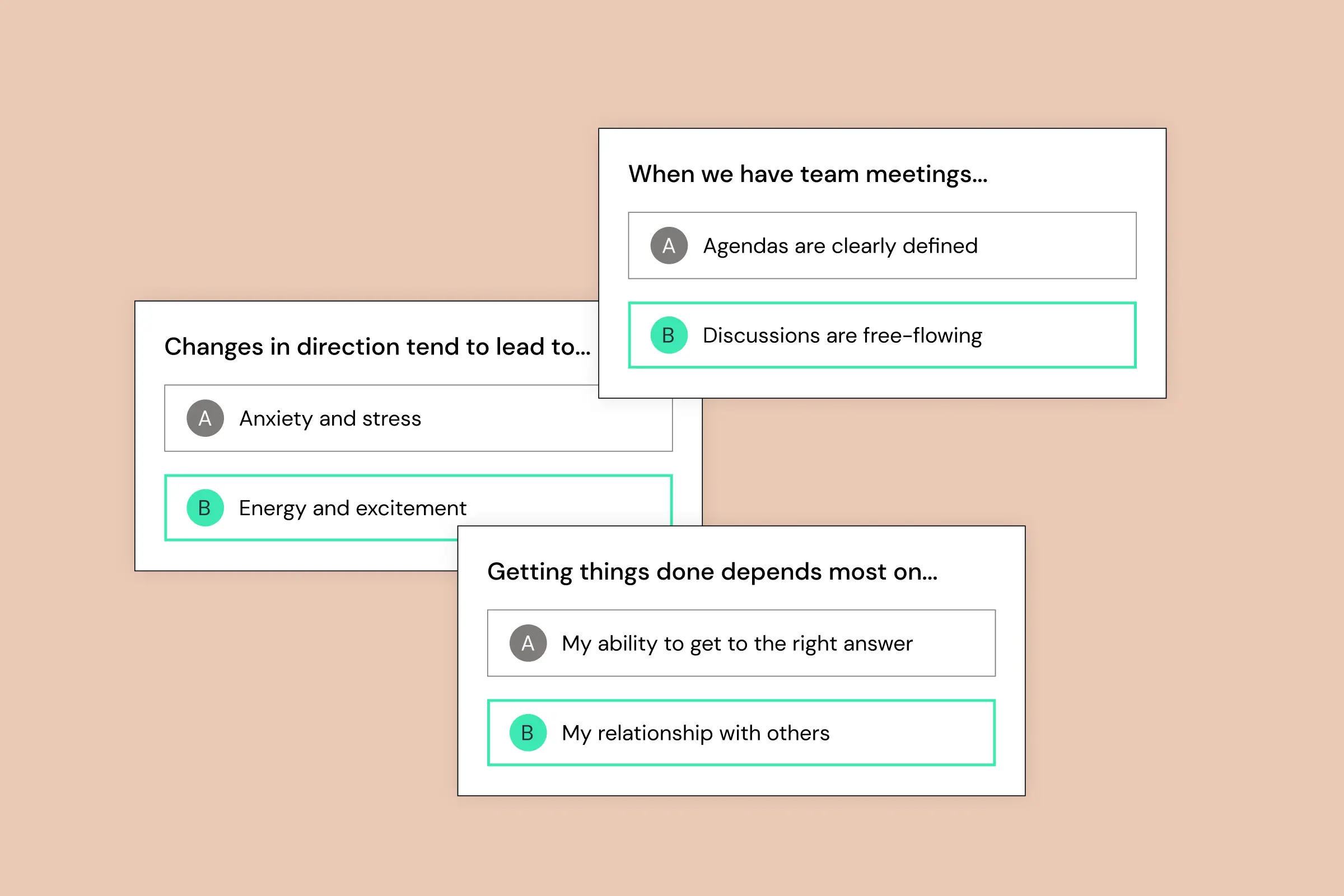

.png)
